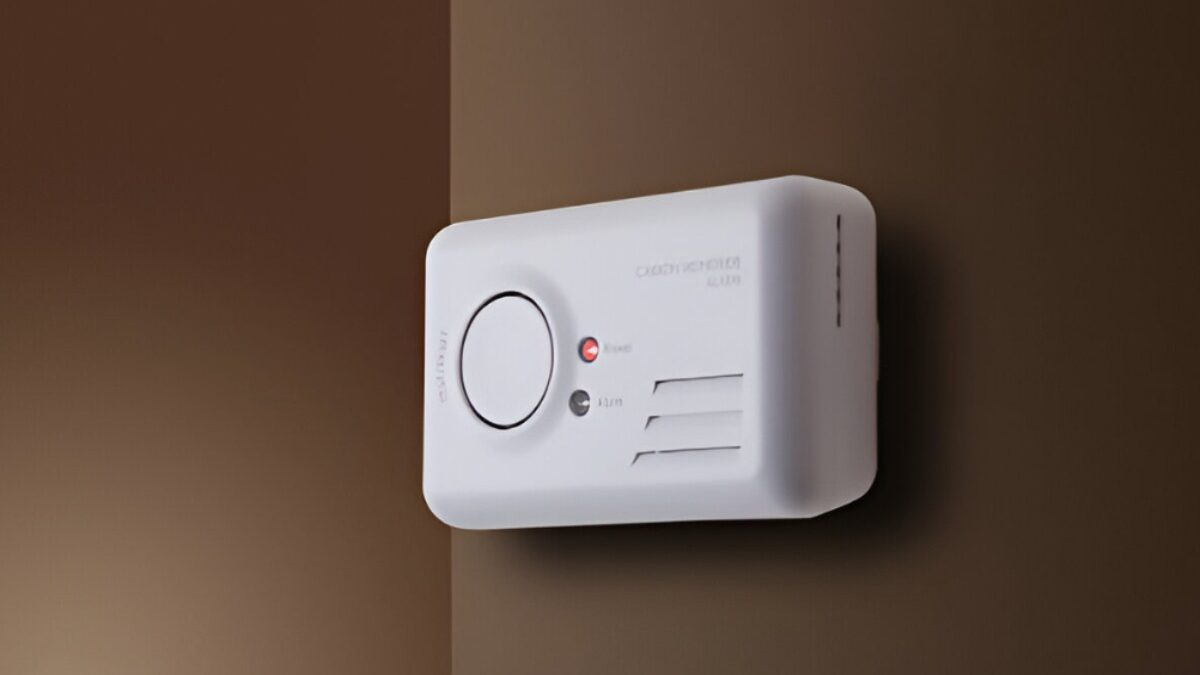Carbon monoxide (CO) is a dangerous gas that you cannot see, smell, or taste. It comes from fuel-burning appliances like gas stoves, furnaces, heaters, fireplaces, and generators. If CO builds up in your home, it can cause headache, dizziness, unconsciousness, and even death. That is why having carbon monoxide detectors in the right places is very important.
Many people ask, “How many carbon monoxide detectors do I really need?”
The answer depends on your home size, number of floors, bedrooms, and where your appliances are located. This guide explains everything in simple words.
Table of Contents
Why You Need Carbon Monoxide Detectors
-
CO gas spreads quietly and quickly.
-
You will not know it is there without an alarm.
-
It protects your family, children, elderly members, and pets.
-
It gives early warning before the gas reaches dangerous levels.
A detector can save lives, so placement and number matter.
How Many CO Detectors You Need
Here are simple rules to follow:
| Home Area | Detector Requirement |
|---|---|
| Each floor of the house | At least 1 detector |
| Outside each bedroom / sleeping area | 1 detector in hallway |
| Near fuel-burning appliances | 1 detector nearby |
| Basement | 1 detector |
| Attached garage | 1 detector near garage entry door |
So most homes usually need 3–6 detectors, depending on layout.
Examples
-
Studio or one-bedroom apartment: 1 to 2 detectors
-
Two-story house: 3 to 5 detectors
-
Large home with basement and garage: 5 to 7+ detectors
Where to Place Carbon Monoxide Detectors
Correct placement ensures fast detection.
Best Places to Install
-
Hallways near bedrooms (so you hear alarms at night)
-
Living room or main common area
-
Basement, especially if furnace is there
-
Near gas appliances like water heater or stove
-
At the entrance from an attached garage
-
On each floor of your home
Placement Tips
-
Place detectors at least 5 feet above the floor (CO mixes with air).
-
They can also be placed on the ceiling.
-
Keep them away from windows, fans, vents, because moving air can delay detection.
-
Do not install inside bathrooms (humidity can affect sensors).
-
Avoid placing right next to the stove to prevent false alarms.
Where Not to Install
Avoid placing detectors:
-
Behind furniture
-
Near open windows
-
Inside the kitchen
-
In bathrooms
-
Next to ceiling fans
-
Too close to fireplaces
-
Inside the garage (instead, near the door entering the house)
This prevents false alarms and missed detection.
Why One Detector Is Not Enough
Many people think one detector in the living room is enough. But that is risky because:
-
CO spreads unevenly
-
Closed bedroom doors block alarm sound
-
Large homes have airflow differences
-
A single detector may not detect a leak on another floor
-
If the battery or device fails, there is no backup
Having multiple detectors increases safety and makes sure every part of the home is protected.
How To Calculate the Right Number for Your Home
Ask yourself:
-
How many floors does my home have?
→ One detector per floor. -
How many bedrooms or sleeping areas?
→ One detector outside each sleeping area. -
Do I have a basement or attached garage?
→ One detector in basement + one near garage entry. -
Do I have multiple gas appliances?
→ Place one near each appliance room.
Simple Formula
Number of Floors + Sleeping Areas + Garage/Basement = Total Detectors Needed
Example:
2 floors + 2 sleeping areas + 1 basement + 1 garage = 6 detectors
Carbon Monoxide Detector Placement: Room-by-Room
| Room / Area | Should You Install Detector? | Why |
|---|---|---|
| Living Room | Yes | Common family area |
| Hallway near bedrooms | Yes | Alerts during sleep |
| Kitchen (not inside) | Near, but not in | Avoid false alarms |
| Basement | Yes | Furnace is often here |
| Attached Garage Door | Yes | Car exhaust CO risk |
| Bedroom | Optional | Extra safety, especially for children or elderly |
| Laundry Room (gas dryer) | Yes | Possible CO source |
Types of Carbon Monoxide Detectors
| Type | Description |
|---|---|
| Battery Operated | Works during power cuts |
| Plug-In | Easy setup, but needs wall outlet |
| Hardwired | Connected to home electrical system |
| Combination Smoke + CO Alarm | Two-in-one system |
| Smart CO Detector | Sends alerts to your phone |
Choose one that is UL / ISI certified for safety.
Maintenance and Safety Tips
-
Test detectors once a month.
-
Replace batteries every 6–12 months.
-
Replace whole detector every 5–7 years (sensors expire).
-
Check for chirping sounds—this means low battery or end of sensor life.
-
Keep detectors clean and dust-free.
Conclusion
To stay safe, the basic rule is:
Install a carbon monoxide detector on every floor, outside each bedroom, and near any fuel-burning appliance.
Homes with basements and attached garages need extra detectors.
More detectors mean better protection and faster warning in case of danger.

